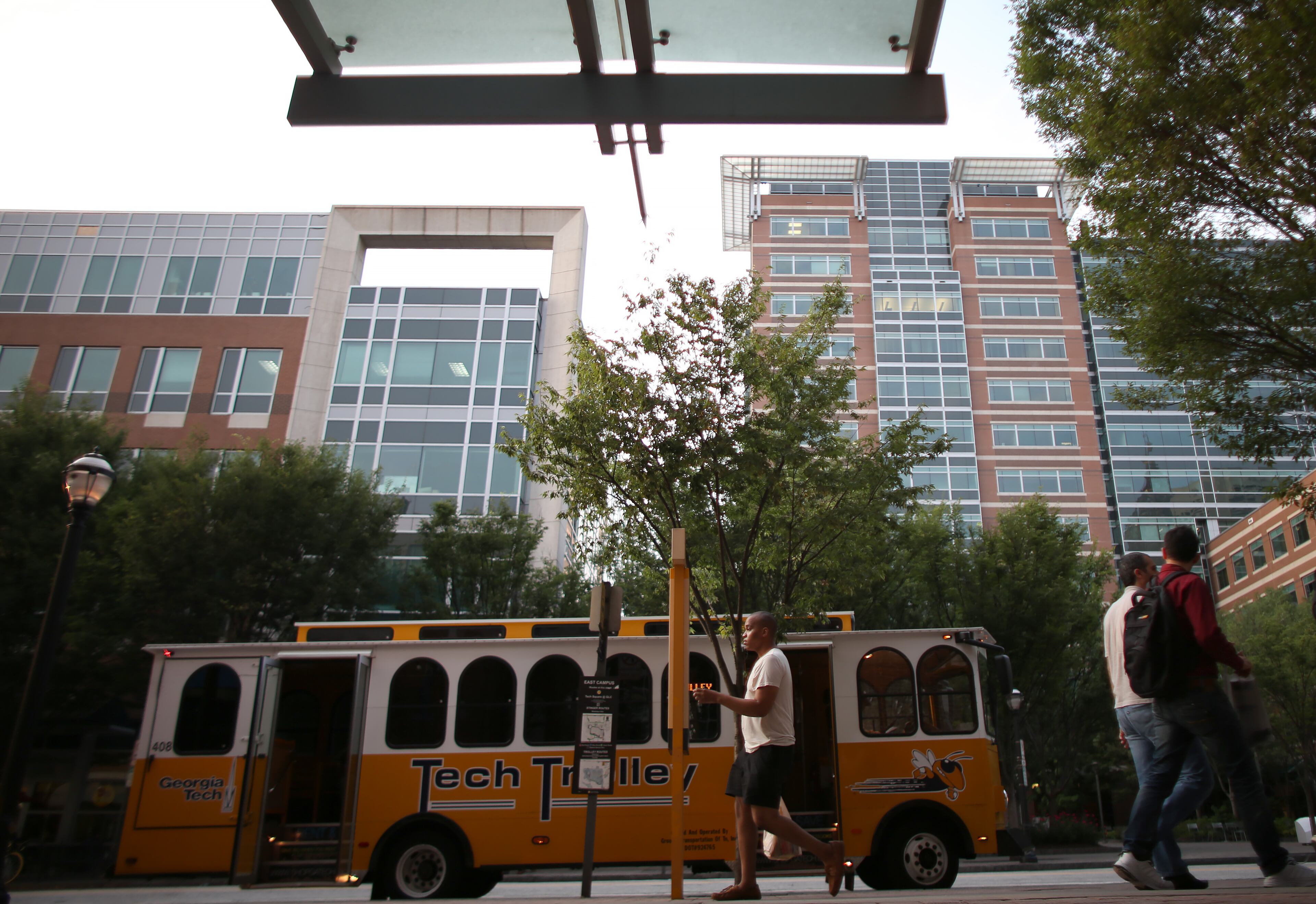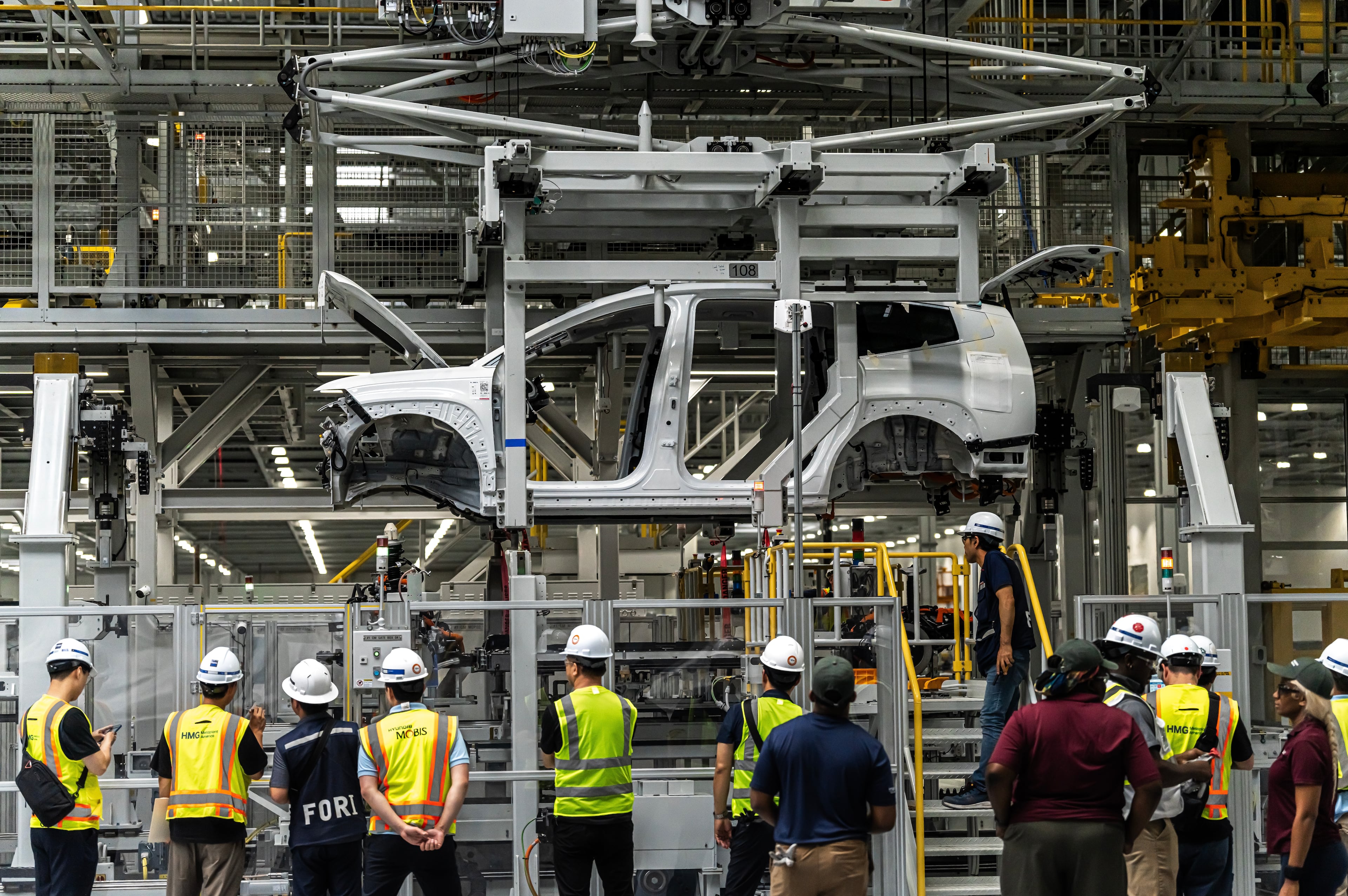Atlanta’s competitive advantages can help the whole region grow

Atlanta is booming. Driven by both its emergence as a leading high-tech and corporate center and regional demographic shifts, the growth curve has been sharp over the last decade, and that growth is flourishing around the state of Georgia as well. Ensuring sustained growth and prosperity requires a strategic approach to fostering educational and employment opportunities for all Georgians, whether that’s from high school, skilled trades, vocational schools, college or doctoral degrees. Georgia’s path to success lies in amplifying its unique strengths, differentiating itself from competitive states such as New York, Massachusetts and California.
Several distinctive features of the region are evident. Georgia and the Southeast are thriving in major global growth sectors such as manufacturing, batteries, automobiles, aerospace and energy. Georgia ranks No. 1 in terms of global corporate investments in the United States for energy manufacturing. This emerging multitrillion-dollar global market includes the production of batteries, solar panels, electric vehicles and hydrogen, and it is a critical component of the emerging regional southeastern “battery belt.” Georgia hosts the largest solar panel manufacturing facility in the Western Hemisphere, and aerospace products are Georgia’s largest export. These industries, dispersed across both urban and rural areas, integrate everything from shopfloor fabrication to cutting-edge, high-technology industries, employing thousands of Georgians across diverse skill sets.

Taking energy and aerospace as examples from the above list, both of these are major growth sectors serving large growth markets in manufacturing and services. However, while the region has all the elements of what can be a globally distinctive ecosystem, we have to connect the dots to capitalize on this distinctiveness and these compelling attributes. For example, how do we make use of the fact that some of the biggest battery manufacturing facilities in the world are next to great battery researchers in Atlanta? More generally, how does the presence of a Ph.D. in a university or corporate lab in Atlanta or Athens and a shopfloor manufacturing employee in rural Georgia mutually benefit from the other’s state presence? I believe we can foster economic growth across the urban and rural workforce by intentionally intertwining physical industries like manufacturing, biotech, agriculture, aerospace, semiconductors, and robotics with virtual domains such as artificial intelligence (AI), high-performance computing, cybersecurity, and data centers. This strategy not only creates more jobs across the state but also continues to attract global high-tech companies in burgeoning industries.
It hinges on three key elements: leveraging the existing competitive advantages of the broader region, focusing on statewide coordination and development, and strategically positioning for future industries. Several tactics can be deployed:

· Pilot-Scale Demonstration and Development Facilities: Currently, there is tremendous research and development capacity in Atlanta, coupled with great manufacturing opportunities across the state. However, we need intentional translation to connect these two so that each benefits from the presence of the other. Establishing state-of-the-art pilot facilities can significantly enhance hands-on workforce development, training and research in high-tech sectors like batteries or unmanned aerial vehicles (UAVs). For example, Curiosity Lab in Peachtree Corners is a great case study for filling this gap in the autonomous vehicle space. It has a 5G-enabled, autonomous vehicle test track, where everyone ranging from early-stage startups to large, established companies can show up to test their innovations without requiring potentially complicated and drawn-out approvals.
Looking to the future, many related opportunities exist. For instance, a battery manufacturing development center could facilitate the scaling and testing of new battery technologies while serving as a nexus for intellectual property development and workforce training. Similarly, a UAV test site equipped with the necessary infrastructure and regulatory pre-approvals could propel Georgia’s presence in the burgeoning autonomous aerial vehicle market.
· Private Sector-Government Collaboration: These partnerships are at their best when high-level “public goods” — such as broad-based education and economic development, infrastructure development, or rural capacity development — intersect with private-sector incentives for innovation, entrepreneurship and capital investment. These partnerships involve proactive coordination between government at all levels (particularly taking advantage of federal grants), educational systems at all levels, and private companies. For example, the Georgia Artificial Intelligence in Manufacturing (Georgia AIM) partnership is a great example of collaborating across manufacturing and AI. It includes the Technical College System of Georgia, Georgia Tech, the University of Georgia, Spelman College and a host of other Georgia universities, community and regional development partners, and statewide Georgia manufacturers, with a diverse set of manufacturing projects that develop and deploy talent and innovation in AI across the state, fueled by significant state resources and a $65 million federal grant. In other words, Georgia AIM invests in AI infrastructure, it invests in physical infrastructure and it invests in workforce development, all aligned around positioning Georgia to both attract and develop home grown corporate manufacturing investments.

· Investment, Capital and Startups: Atlanta is emerging nationally as a startup destination, driven by climate, diverse workforce, logistics and housing. But more private capital is needed to deploy this innovation; the Southeast is 24% of the U.S. economy but only accounts for 7% of the venture investment, according to Blake Patton of Tech Square Ventures. However, special kinds of capital are particularly useful — capital that both understands and is invested in regional development as well as capital that specializes in “hardtech” applications described above. These will not necessarily be the same firms, and we can point to several examples of how this is already playing out. Atlanta already boasts one of the highest concentration of Fortune 500 companies that are deeply invested in the state, many of which are strategic investors in Tech Square Ventures, an Atlanta-based VC firm. Southern Company was a leader in establishing Energy Impact Partners, a global VC with electric utilities as founding investors who understand the complexities of the energy industry and the potentially long lead times to recoup investments. Anzu Partners is a VC firm exclusively focusing on industrial and life science technology companies, i.e. hardtech companies, and recently established an Atlanta office. A common theme among all of these is the proactive, strategic investments from large Atlanta-based companies and great universities like Emory, Georgia Tech and UGA.

· Intentionally Crosscutting Investments from Cities, the State and the Private Sector: A common theme in this essay and the above approaches is to seek crosscutting opportunities in physical and virtual realms, and where software intersects with hardware. This general theme can be both a general aspiration and a broad-based strategy. Such intentionality in seeking these crosscutting opportunities will enable the city, the state and the region to fully capture the value chain associated with massive industries of the future while synergistically connecting urban and rural regions. Industries such as batteries, automotive and aerospace represent fertile ground for Georgia-based ventures, where rural employment opportunities intersect with high-tech advancements, attracting investment and fostering growth.
Georgia’s trajectory as a magnet for companies in emerging industries hinges on intentional investments that bridge physical sectors like manufacturing and aerospace with virtual domains like AI and high-performance computing. By championing this integrated approach, Georgia can lead the charge in future industries while bringing all Georgians along.
Tim Lieuwen is executive director of the Strategic Energy Institute at Georgia Tech.

